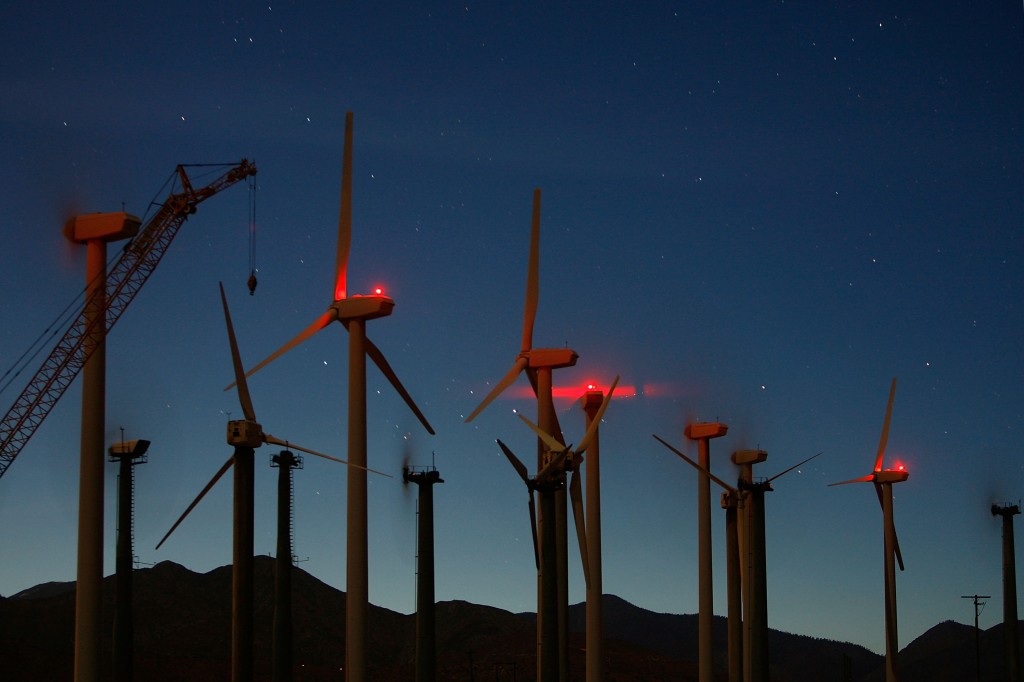The New York State Department of Environmental Conservation (DEC) provides on its web site many claims about the great progress and benefits achieved by promoting and subsidizing wind energy in the state – an initiative kicked off by former Governor Pataki and followed slavishly by each succeeding administration and legislature.
Unfortunately, like other promoters of wind energy, the DEC article tells less than half the true story about very high cost, low value electricity from wind energy and ignores completely its adverse environmental, economic, electric system reliability impacts, and its damaging impact on ordinary citizens, taxpayers, and electricity users in New York.
For example, the DEC article doesn’t mention (a) incessant noise from wind turbines, (b) birds and bats killed by the huge machines, (c) the destruction of landscape, natural resources, scenic vistas, and animal habitat during construction and thereafter, or (d) the damage to property values and quality of life of those unfortunate enough to live near “wind farms.”
Neither does the DEC mention the high cost and low value of electricity from wind turbines. The low true value of electricity from wind turbines is due to their intermittent, volatile, and unreliable output and their tendency to produce electricity primarily at night in cold and shoulder months when electricity is least needed, rather than on hot summer weekday late afternoons when demand is high.
1. Looking beyond the misleading DEC article, the fact that political leaders continue to push wind energy is particularly difficult to understand when looking at the following facts: New York’s first 15 “wind farms” completed before the end of 2010 have a total rated (or nameplate) capacity of 1,273.9 megawatts (MW). During 2012 these 15 “wind farms” produced 2,321,500 megawatt-hours (MWh) of electricity. (Source: 2013 “Gold Book” issued by the NYISO and windaction.org Analysis of NY State Wind Generation by Project, April 29, 2013)
Assuming very conservative capital cost numbers, the capital cost of these 15 “wind farms” in NY was probably around $2 billion. The predominate demand for electricity in New York state is in the New York City (NTC) area. However, NY’s “wind farms” are located in upstate and western New York so the output from these “wind farms” must be transmitted to the NYC area, adding to the cost of the electricity and adding environmental damage when additional transmission capacity must be provided.
2. Now consider a logical alternative: A single 450 MW gas-fired combined cycle generating unit (or two 225 MW units) located near NYC, operating at only a 60% capacity factor, could have supplied just as much electricity – actually 2,365,200 MWh – with about one fourth of the capital cost and with less overall cost to consumers and taxpayers when fuel and O&M costs are added. (450 MW of capacity x 8760 hrs per year x .60 (capacity factor) = 2,365,200 MWh).
Furthermore, the gas-fired generating units would be reliable and dispatchable and thus available when needed, including times of peak electricity demand. Electricity is available from wind turbines only when wind speeds are in the “right” range. (Wind turbines start producing electric when wind speeds reach about 6 MPH, achieve rated capacity around 32 MPH, and shut down around 55 MPH). They are highly unlikely to produce much electricity during times of peak demand, so they have little or no “capacity value.”
Also, there would be no need to add transmission capacity to bring wind-generated electricity to the NYC area from upstate and western NY. Finally, a factor that should be important to political leaders: a gas-fired generating unit would provide many more long lasting jobs than “wind farms.”
The apparent low regard that NY political leaders have for the people and organizations dependent on electricity is illustrated by the extremely high electric bills that result from the state’s policies. The average electricity price for residential customers in New York in 2012 was 17.69 cents per kilowatt-hour (kWh), while the nationwide average in 2012 was 11.88 cents per kWh.
Therefore, New York’s average residential electricity prices are 53% above the national average. A New York resident using 6,500 kWh of electricity per year will pay about $400 per year more for his or her electricity than if New York’s electricity prices were at the national average. (Only Alaska, with 17.84 cents per kWh and Hawaii with 37.27 cents per kWh had higher prices.) Consider the job and other local economic benefits if New York had allowed its approximately 8,000,000 residential electric customers to spend $400 per year – that would be $3.2 billion – in their local economies.
Unfortunately, the New York State’s Department of Environmental Conservation web site article cited earlier is but one example of the way that government officials and employees now use tax dollars to distribute false and misleading information that protects and promotes bad policies, helps special interest groups such as the wind industry, and/or promotes their personal preferences.
Glenn Schleede is retired after working on energy and related matters in government and the private sector for over 30 years. From 1992 until September 2003, Schleede maintained a consulting practice, Energy Market and Policy Analysis, Inc. (EMPA), providing analysis of energy markets and policies, primarily natural gas and electricity issues. Prior to forming EMPA, Schleede was Vice President of New England Electric System (NEES), Westborough, MA, and President of its fuels subsidiary, New England Energy Incorporated. He served as Executive Associate Director of the U.S. Office of Management and Budget (1981), Senior VP of the National Coal Association in Washington (1977-1981) and Associate Director (Energy and Science) of the White House Domestic Council (1973-1977), and held career service positions in the U.S. OMB and the U.S. Atomic Energy Commission

